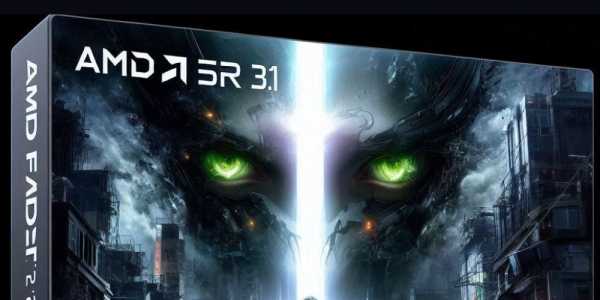AMD FSR 3.1: Elevating Gaming with Superior Upscaler and Frame Generation
- 7/1/2024

The gaming world is abuzz with the release of AMD's FidelityFX Super Resolution (FSR) 3.1, an update that promises to significantly enhance the visual and performance quality of PC games. Spurred by the third generation of FSR technology, this upgrade has been eagerly awaited by gamers and developers alike. AMD has rolled out impressive new features, including an advanced shader-based upscaler and a decoupled frame generator. These improvements come at a critical time, especially as FSR 3.0 had largely left users wanting more. In this article, we'll delve into what makes FSR 3.1 a game-changer and explore its impact on popular titles like Ghost of Tsushima, Horizon Forbidden West, and Ratchet and Clank: Rift Apart.
Back in November 2022, during the launch of AMD's Radeon RX 7000-series GPUs, gamers had high expectations for FSR 3.0. However, the focus on a shader-based frame generation system felt like a letdown when compared to Nvidia's more comprehensive DLSS Super Resolution solution. The anticipation for an upgraded upscaler was palpable, which FSR 3.1 has fortunately addressed. By enhancing the temporal stability, reducing flickering and shimmering, and improving ghosting reduction, FSR 3.1 has visibly outperformed its predecessor, FSR 2.2. The shift in technology promises a better visual experience, aligning closer yet still distinct from Nvidia’s offerings.
But what really sets FSR 3.1 apart is its versatility in frame generation. The decoupled frame generator feature enables gamers to pair AMD's robust frame interpolation with alternative upscalers, including those from rivals like Nvidia and Intel. This flexibility means that users of Nvidia's RTX 30-series GPUs and Intel's Arc GPUs can benefit from AMD's progressive frame generator techniques without compromising on their preferred upscaling methods. It essentially democratizes advanced frame generation, allowing for a broader application across various hardware setups. Ghost of Tsushima is one of the first games to demonstrate this capability, setting a new standard for visual and performance quality in gaming.
Moreover, the improved shader algorithm in FSR 3.1 addresses previous complaints of visual artifacts in rapidly moving scenes or intricate textures, such as fur. For instance, Ratchet and Clank: Rift Apart was notorious for its upscaler struggling with flickering and shimmering issues. With the release of FSR 3.1, these issues have greatly reduced, resulting in a smoother and more visually appealing experience. Tech YouTuber Daniel Owen conducted an in-depth comparison, showcasing how noticeable the improvements are. It's clear that this update doesn't just boost performance metrics but enhances the overall gaming ambiance by creating more immersive and less distracting visuals.
In conclusion, AMD's FidelityFX Super Resolution 3.1 marks a substantial leap forward in gaming technology by addressing the limitations of its predecessor and delivering a superior visual and performance experience. The introduction of a refined upscaler, combined with the flexibility of a decoupled frame generator, signifies a more inclusive approach, benefiting users of various GPUs beyond AMD's own lineup. Games like Ghost of Tsushima and Horizon Forbidden West now stand as benchmarks for what this technology can achieve, promising a more fluid and vibrant gaming experience for the PC gaming community. As AMD continues to innovate, one can only look forward to what future iterations of FSR will bring to the ever-evolving world of gaming.
Latest Articles
- Elden Ring: Shadow of the Erdtree – A Journey Worth Remembering Long-awaited expansions often carry the weight of expectation, especially when following a release as widely loved and discussed as Elden Ring. With S...
![]()
- Steve Nielsen
- 7/7/2025
- Helldivers 2 Expands to Xbox: Super Earth Unites Gamers Beyond Borders It's not every day that the gaming community witnesses a unifying moment that resonates beyond platforms and preferences. Helldivers 2, the highly ant...
![]()
- Steve Nielsen
- 7/7/2025
- Unlocking the Rosetta Aptitude Test in Once Human: A Guide for Adventurers If you’re adventuring through Once Human’s fascinating, distorted world, chances are you’ve come across a particularly clever challe...
![]()
- Steve Nielsen
- 7/7/2025















